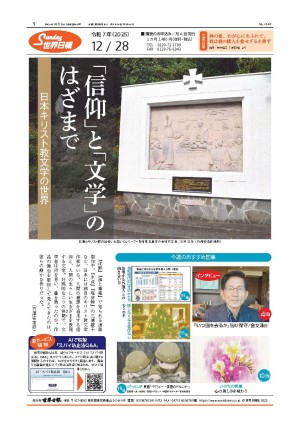アジア系移民の英語力はヒスパニックより低い/Asian-American immigrants have more difficulty mastering English than Hispanics
米国内で中国語、韓国語、ベトナム語を話す人々は、スペイン語を話す人々ほど英語がうまくないことを、3日に公表された国勢調査局の調査は示している。アジア出身者が中南米出身者より英語のマスターに苦労しているということだ。
米国人全体では、家庭内で350以上の言葉が話されている。そのうち150はアメリカ先住民の言葉だ。これらの言葉の中には、使用者の数が非常に少なく、個人が特定される可能性があるため調査局が総数を公開しなかった言葉もある。
英語は国内の大都市では多数派ではない。ロサンゼルス大都市圏の住民の54%もの人々が、家庭で英語以外の言葉を話している。マイアミ大都市圏では51%、サンフランシスコ40%、ニューヨーク38%、ヒューストン37%、ワシントン36%だ。
2009年から2013年の調査局の調査結果によると、5歳以上の5人に1人に当たる6030万人が家庭で英語以外の言葉を話す。その中でスペイン語が最も多く3750万人、中国語が290万人で続く。
家庭で100万人以上が話している言葉は、フランス語、ドイツ語、韓国語、ベトナム語、タガログ語であり、アラビア語は100万人に達しようとしている。
しかし、それ以外にもさまざまな言葉が家庭で話され、フィンランド語が約2万5000人、ヘブライ語が約21万2000人、ナバホ語が約16万6000人、アルメニア語が約23万7000人となっている。
国勢調査局の統計専門家エリク・ビックストロム氏は「米国民の多くは家庭で英語だけまたはスペイン語、ベトナム語などの一部の言葉を話している一方で、アメリカン・コミュニティー・サーベイで、多様な言葉が米国で話されていることが明らかになった。例を挙げると、ニューヨーク都市圏では人口の3分の1以上が、家庭で英語以外の言葉を話し、その数は200近い。特定の地域での言語の数、その言語を話す人々の数を知れば、政治家、政策立案者、研究者にとって重要は情報が手に入る」と語った。
家庭でどんな言語が話されているかは、政策立案者にとって役立つ情報の一部にすぎない。重要なのは、英語をうまく話せない人がどれだけいるかという点であり、政府と企業はそれぞれに合った言葉で接触する必要がでてくる。
驚くべき数字がある。家庭でスペイン語を話す人々の56%以上は、英語も「非常にうまく」話せる。
ところが、アジア系の言語を話す人々は、それほどうまくない。調査によると、家庭でベトナム語を話す住民140万人のうち、英語も「非常にうまく」話せるのはわずか40%だ。中国語または韓国語を家庭で話す人々のうち、英語がうまく話せるのは約45%にすぎない。
移民研究センターの人口統計学者スティーブン・カマロタ氏は、この調査結果には注意が必要だと指摘した。移民の言語能力は通常、滞在期間が長いほど、教育レベルが高いほど高くなる。ベトナム移民のほとんどは長い期間米国に住んでおり、中国系移民は教育水準が高い。
カマロタ氏はさらにデータについて慎重な姿勢を示し、調査では英語力について住民自らが評価している点を挙げた。
「自己評価に基づいている。調査が無意味だということではなく、アジア系住民の自身への評価が厳しいということが原因である可能性がある」
(11月3日付)
Those who speak Chinese, Korean and Vietnamese at home are less proficient in English than Spanish-speakers according to striking findings the Census Bureau released Tuesday that suggest some Asians may have a tougher time mastering English than Hispanics.
Overall, Americans speak more than 350 different tongues at home, including some 150 Native American languages, some of which have so few speakers that the bureau declined to release the totals for fear that it would identify actual individuals.
And in the country’s largest cities, English is actually a minority language: A staggering 54 percent of residents in the Los Angeles metropolitan region speak a language other than English at home, as do 51 percent of Miami-area residents, 40 percent of San Francisco, 38 percent of New York, 37 percent of Houston and 36 percent of the Washington, D.C., region.
The data, gleaned from Census information from 2009 to 2013, found 60.3 million residents, or more than one in five people over the age of 5, speaks a language other than English at home. Spanish is the top alternative, with 37.5 million home speakers, followed by Chinese with 2.9 million home speakers.
Other top languages with more than 1 million home-speakers were French, German, Korean, Vietnamese and Tagalog. Arabic, meanwhile, was nearing the 1 million mark.
But the breadth of languages was also apparent, with about 25,000 speaking Finnish at home, about 212,000 speaking Hebrew, approximately 166,000 speaking Navajo and 237,000 or so speaking Armenian.
“While most of the U.S. population speaks only English at home or a handful of other languages like Spanish or Vietnamese, the American Community Survey reveals the wide-ranging language diversity of the United States,” said Erik Vickstrom, a Census Bureau statistician. “For example, in the New York metro area alone, more than a third of the population speaks a language other than English at home, and close to 200 different languages are spoken. Knowing the number of languages and how many speak these languages in a particular area provides valuable information to policymakers, planners and researchers.”
Languages spoken at home are only part of the story for those policymakers. The bigger issue is how many of them are not proficient in English, meaning governments and businesses need to try to reach them in their own languages.
Those numbers were surprising: More than 56 percent of those who speak Spanish at home said they also speak English “very well.”
Asian language-speakers, by contrast, do not fare as well. The Census said just 40 percent of the 1.4 million residents who speak Vietnamese in their homes also speak English “very well,” and only about 45 percent of those who speak Chinese or Korean at home are also proficient in English.
Steven A. Camarota, a demographer at the Center for Immigration Studies, said the findings were eye-catching because language skills usually increase the longer immigrants have been here and the higher their educational attainment. Vietnamese immigrants generally have been in the U.S. for some time, while Chinese immigrants have high education levels.
Mr. Camarota also cautioned about the data, saying the Census asks residents to grade themselves on their English skills.
“It’s based on self-evaluation. It doesn’t mean that it’s meaningless, it just means that Asians might judge themselves much harsher,” he said.





